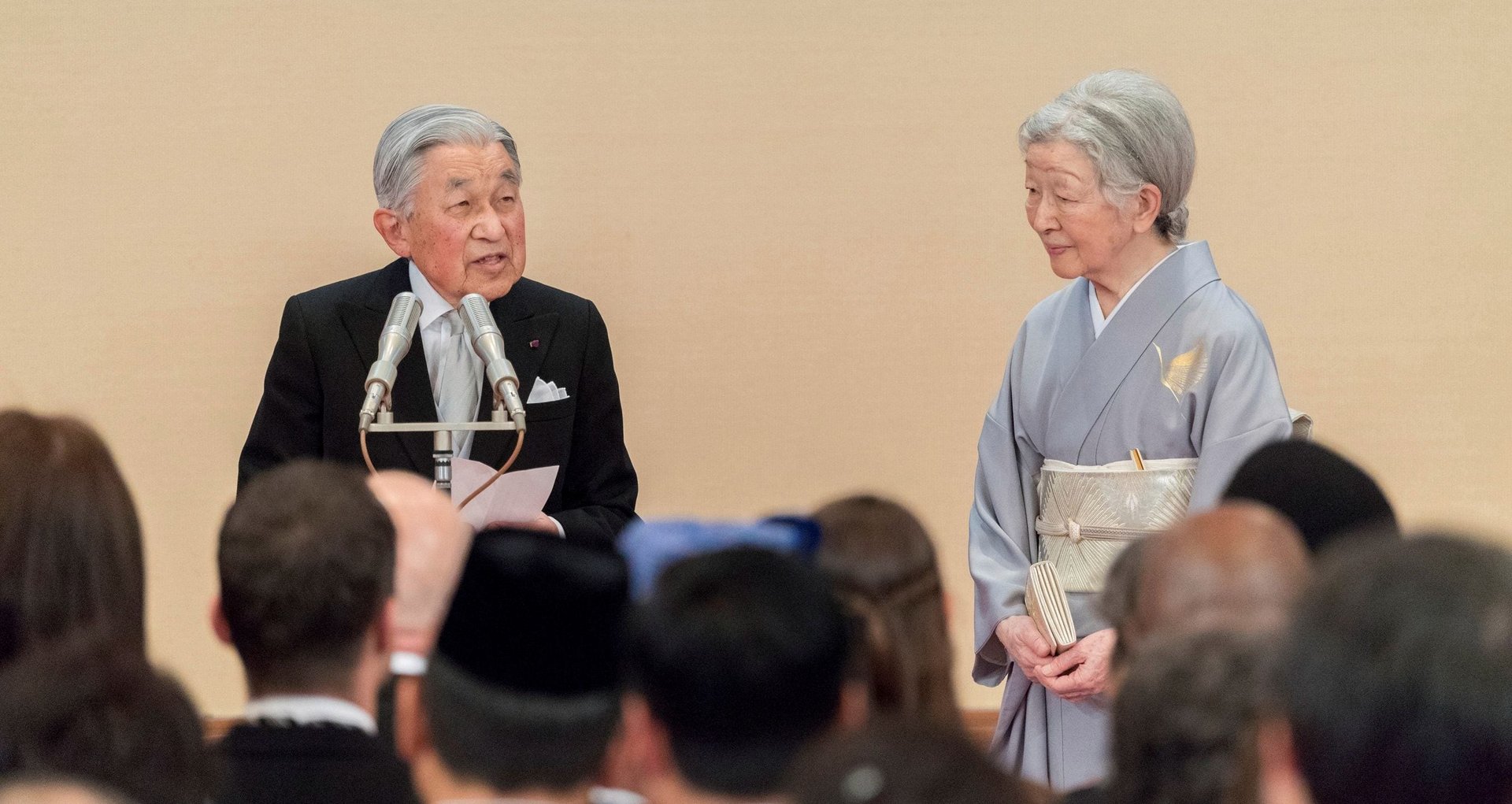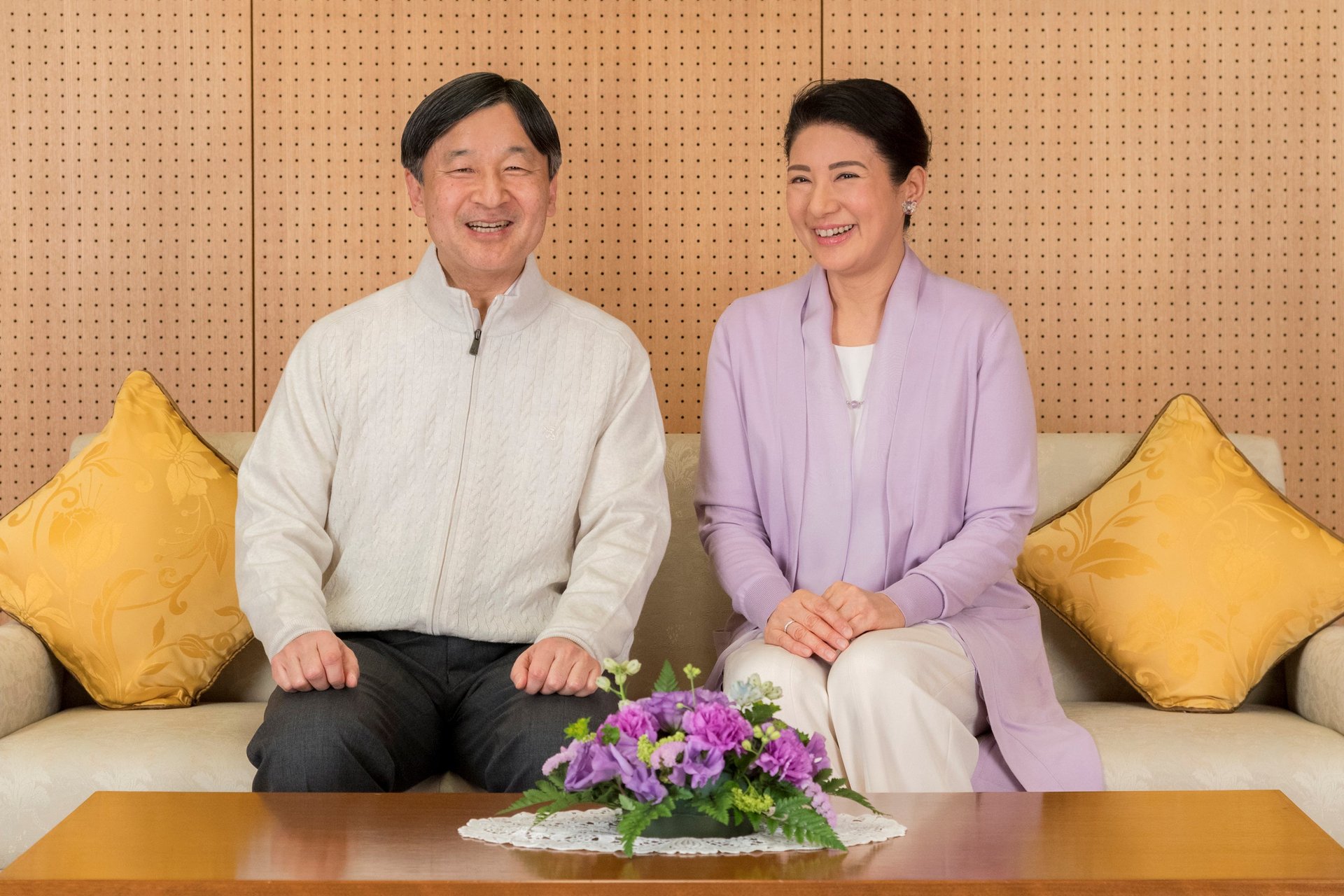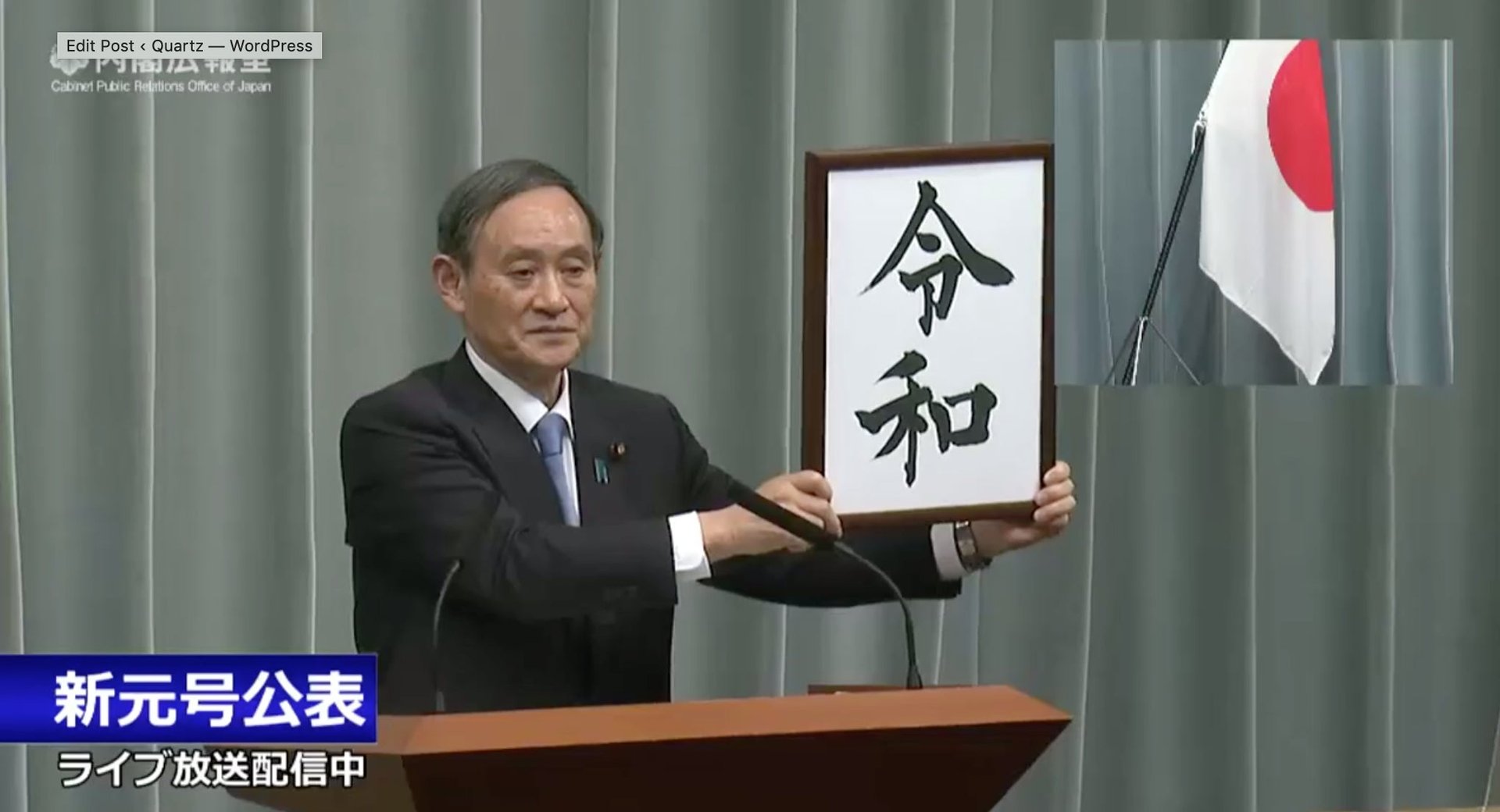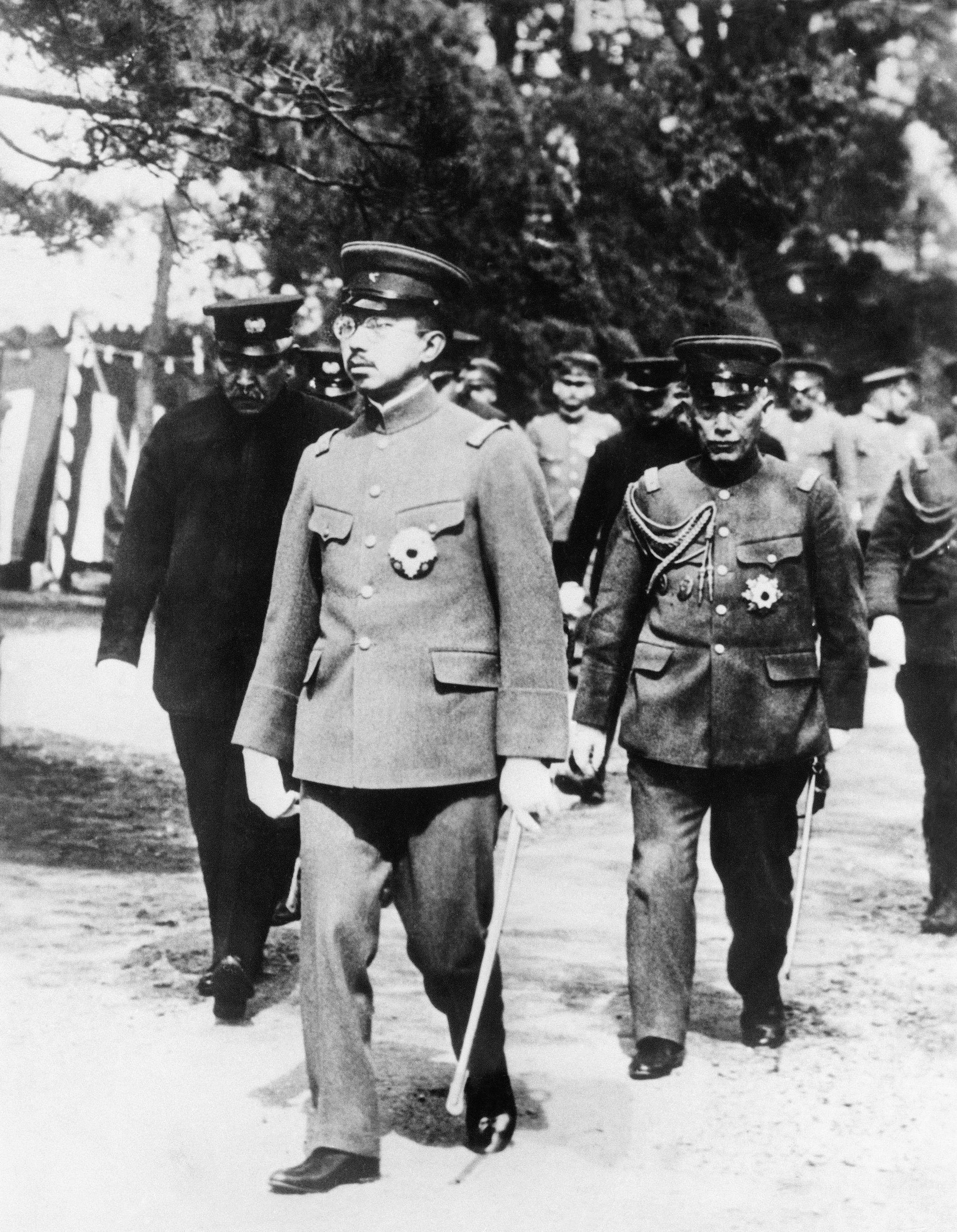Japan’s new era name, “Reiwa,” is a command for peace
Japan today (April 1) announced the name of its new era—Reiwa (令和)—meaning “commanding peace,” as crown prince Naruhito prepares to take the Chrysanthemum throne on May 1.


Japan today (April 1) announced the name of its new era—Reiwa (令和)—meaning “commanding peace,” as crown prince Naruhito prepares to take the Chrysanthemum throne on May 1.

The announcement was made by cabinet secretary Yoshihide Suga following a highly secretive, months-long selection process involving a panel of experts—with the final decision made in just two hours (paywall) this morning to avoid leaks.

The current Heisei era, which began in 1989, will end on April 30 following an announcement in 2017 by 85-year-old emperor Akihito of his intention to abdicate this year, citing age and health issues. The government had to enact a bill to allow for his abdication because Japanese law has no such provision for emperors. No Japanese emperor has abdicated for almost 200 years.
The new name breaks with tradition as it is drawn from the Manyoshu, an ancient anthology of Japanese poetry, rather than from Chinese classics (paywall). Suga said that the person who came up with the name will remain anonymous.
Prime minister Shinzo Abe explained that the choice of Reiwa was a celebration of Japan’s rich culture and tradition, and a symbol of the people of Japan “coming together beautifully” with hope for the future.
Some, however, were quick to spot a dichotomy. Many on social media commented that the use of rei, a word meaning to order to command, was an awkward juxtaposition against the word wa, meaning peace. They added that the choice was somewhat befitting of Abe’s own conservative beliefs. The confusion over the name’s meaning soon led Japan’s foreign ministry to clarify it should be translated as “beautiful harmony.”
The name of the era is widely used as a calendar in Japan alongside the Gregorian calendar—for example, this is the year Heisei 31 and Reiwa 1. Heisei, which means “achieving peace,” followed the turbulent Showa (“enlightened peace”) era under the reign of Akihito’s father Hirohito from 1926 to 1989, during which Japan experienced both the destruction of World War II and the period of rapid economic recovery that followed.

Under the new post-war constitution drafted in large part by the US which was promulgated in 1947, the Japanese emperor was stripped of all political power and given only a ceremonial title as a “symbol of the state and of the unity of the people.” The role of the emperor as a near divine being with absolute political power was seen as one of the major factors leading to Japan’s military expansionism in the 1930s.
The end of the Heisei period has ushered in a period of soul-searching and nostalgia in Japan. The last three decades will likely be remembered as a time of unprecedented peace and prosperity in Japan following the upheaval of Showa. However, the achievements of the Heisei period were marred by a long period of economic stagnation, as well as a series of natural and man-made catastrophes including the Kobe earthquake of 1995 and the earthquake and tsunami of 2011, as well as the terrorist attacks in 1995 by the Aum Shinrikyo cult which included a sarin gas attack on the Tokyo subway. Japanese media reported that the reason why the remaining members of the cult were executed in 2018 was because authorities wanted to put an end to the cult for good before the start of the new era.
Akihito—who in his spare time conducts research on gobies—and his wife empress Michiko are deeply loved in Japan and are widely credited for their efforts in maintaining peace and in promoting better ties with neighbors such as China and South Korea, often in contrast to (paywall) the conservative Abe government. Tens of thousands of people thronged Akihito and Michiko when the emperor delivered his farewell speech in December in Tokyo, where he even said he welcomed more immigrants to the country. New legislation that opens the door to tens of thousands more foreign workers was also enacted today (link in Japanese).
The practice of bestowing an era name on an emperor’s reign began with the accession of the Meiji emperor to the throne in 1868, which also marked the creation of the modern state of Japan. The custom was adopted from the Chinese imperial system of the Qing court. Previously, an era could span the reign of more than one Japanese emperor.